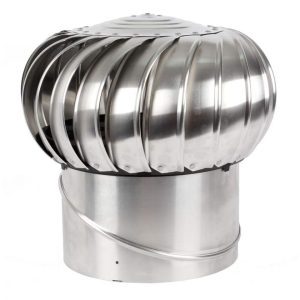How to compare roof ventilators
How to compare roof ventilators This roof ventilator comparison is presented so as to inform the reader as to how to compare the overall difference between dynamic and passive roof ventilators Rotary/Turbine Type Roof Ventilator Commercially developed in the United States in early 1900s to remove welding fumes in factories during the winter months. Mode…
How to compare roof ventilators


This roof ventilator comparison is presented so as to inform the reader as to how to compare the overall difference between dynamic and passive roof ventilators
Rotary/Turbine Type Roof Ventilator
Commercially developed in the United States in early 1900s to remove welding fumes in factories during the winter months.
Mode of Operation
Wind Driven Rotary/turbine ventilator
Uses wind energy as it’s principle mode of operation.
Initial Conclusion
Rotary/turbine can best be referred as a Wind ventilator as it’s efficiency is governed by wind speed which is predominant in the Autumn, Winter and Spring months, particularly at the change of seasons.
Highest efficiency according design and wind velocity.
Rotary type roof ventilator will move a fixed volume of air (irrespective of temperature or season) dictated by wind velocity.
No wind, no function
Rotary/turbine type is dictated by availability of a replacement volume (free air).
Rotary/turbine type cannot displace what cannot be replaced.
Performance during cooler months
Rotary/turbine unit is deemed detrimental in residential applications as dry warmer air in roof is removed and replaced with ambient which has greater moisture levels.
Performance during warmer months
Rotary/ turbine type is not suited when no wind movement is available, the only way hot air can escape is by having to overcome the resistance created by the turbine rotor. It is therefore less efficient than a simple open unobstructed hole in the roof.
Selection
Multiple units are required for roof void (attic) areas above above 80 sq/m.
Re – Maintenance
Rotary/turbine type, requires periodical maintenance and is inclined to be noisy particularly on steel roofs. Replacement is inevitable.
Windtower Roof Ventilator
Initial product patent in Australia in late 1980s for removal of heat from buildings. This is a passive heat and pressure driven roof ventilator designed for summer conditions.
Mode of Operation
Heat & Pressure
Motionless Condor Kinetic type is designed to use air pressure and heat load as it’s governing mode of operation with wind as a secondary contributor.
Initial Conclusion
Motionless Condor type can best be referred as a heat ventilator as it’s efficiency is governed by pressure and heat values along with external pressures.
Highest efficiency during Summer months according to temperature.
Passive Condor Kinetic type roof ventilator will move a high volume during the Summer and low volume during Winter.
The Condor type can function in zero wind velocity
Condor Kinetic type is able to offer air volume exchange as dictated by pressure fluctuations both internal and external of the building. Put simply the Condor passive function allows the building to breathe in and out.
Performance during cooler months
Condor Kinetic mode of operation is minimal and only pressure responsive. It is however, ideal in residential / institutional situations to ensure the dry air is not removed from roof cavity only to be replaced with external moist ambient.
Performance during warmer months
Condor Kinetic type was designed for and is well suited. Distinct advantage in that only one correctly sized Condor is required for a
conventional residential roof, either tile or steel.
Selection
For residential dwellings, only one correctly sized unit is recommended for building with common roof void (attic area only) not exceeding 300 sq/m
Re – Maintenance
Condor Kinetic type requires no maintenance, noise free.
